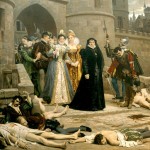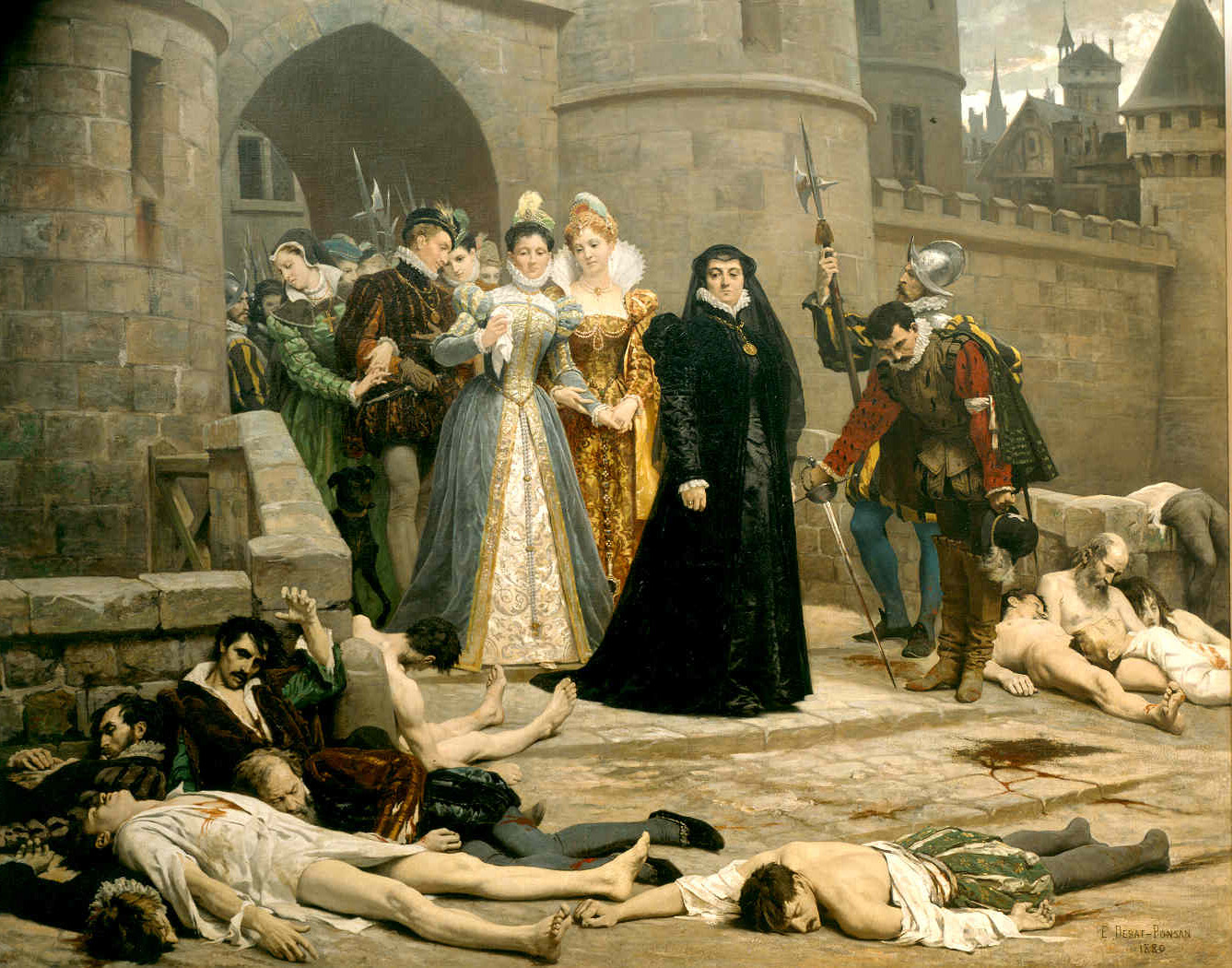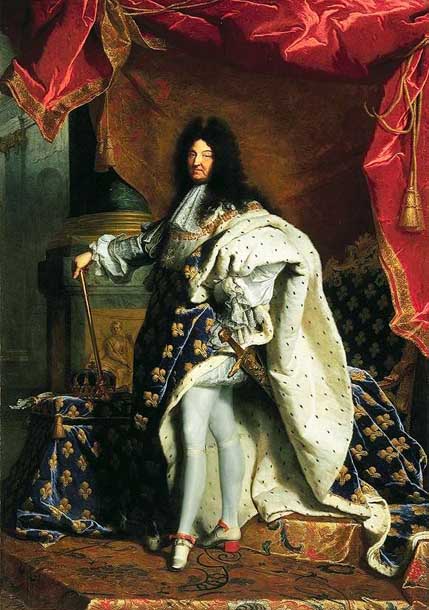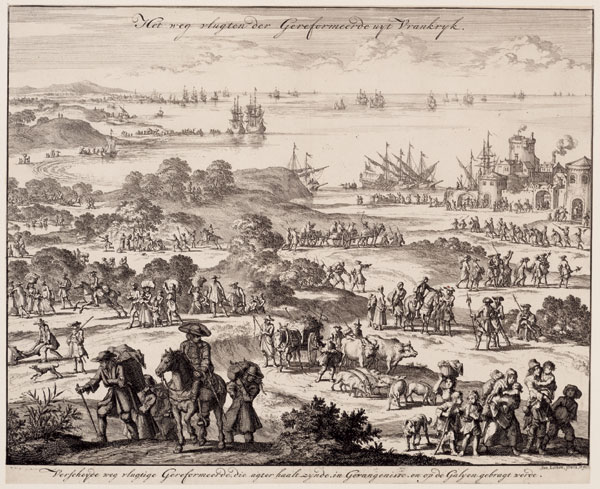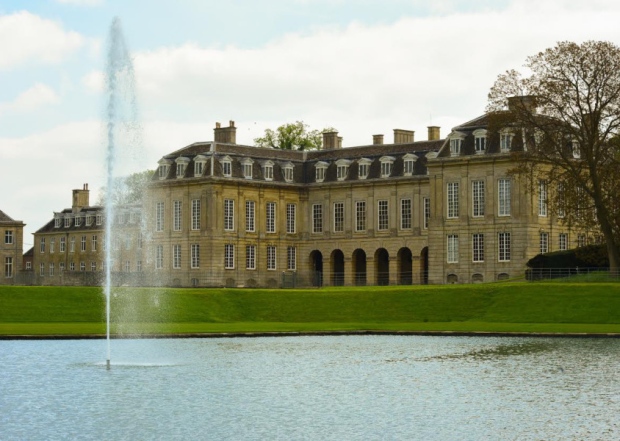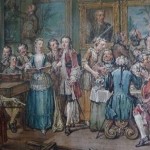Boughton House, the Huguenot Summer … and a contemporary resentment
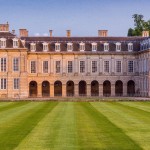
The history of Boughton House – which this summer opens its doors to the public as part of the Huguenot Summer – offers a fascinating glimpse into the religious confusions of the 17th century, and an intriguing account of the employment of Huguenot craftsmen (and craftswomen), which cannot have been welcomed by the silversmiths and other workers of the time.
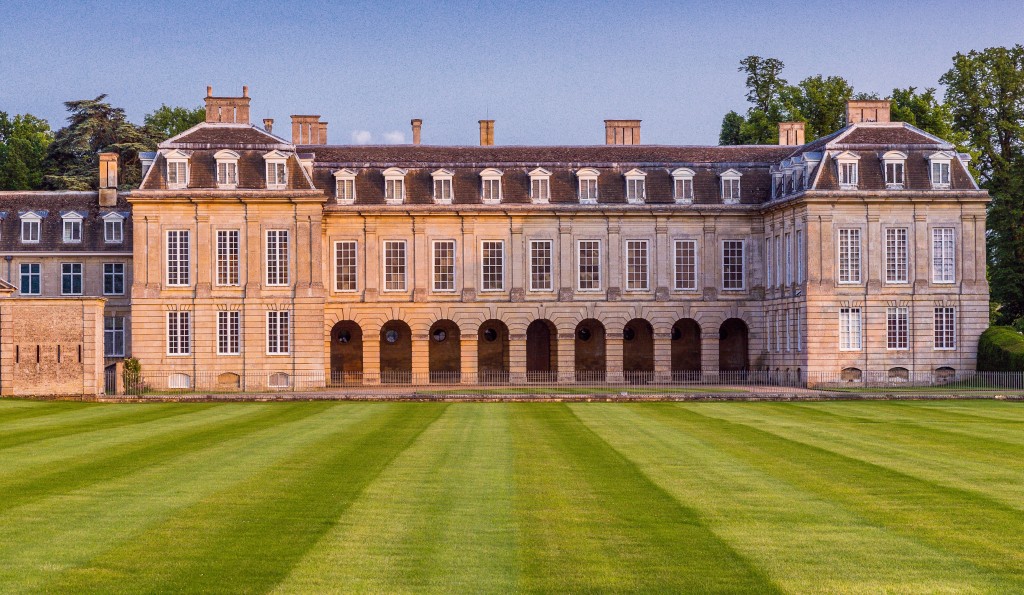
The North Front of Boughton House is directly influenced by Daniel Marot, one of the key Huguenot architects/designers (see below for more on Marot).
The north front of Boughton House, one of the most impressive stately homes in England, is modelled on the French Palais de Versailles (indeed, it’s known as the ‘English Versailles’), Louis XIV of France’s vast palace, the construction of which Ralph Montagu, the first Duke of Montagu, would have observed when an ambassador to the French court. On inheriting Boughton House on the death of his father, Montagu set about rebuilding and refurnishing it, enlisting the cream of Huguenot expertise to populate it with silverware, woodwork, painting, frames …
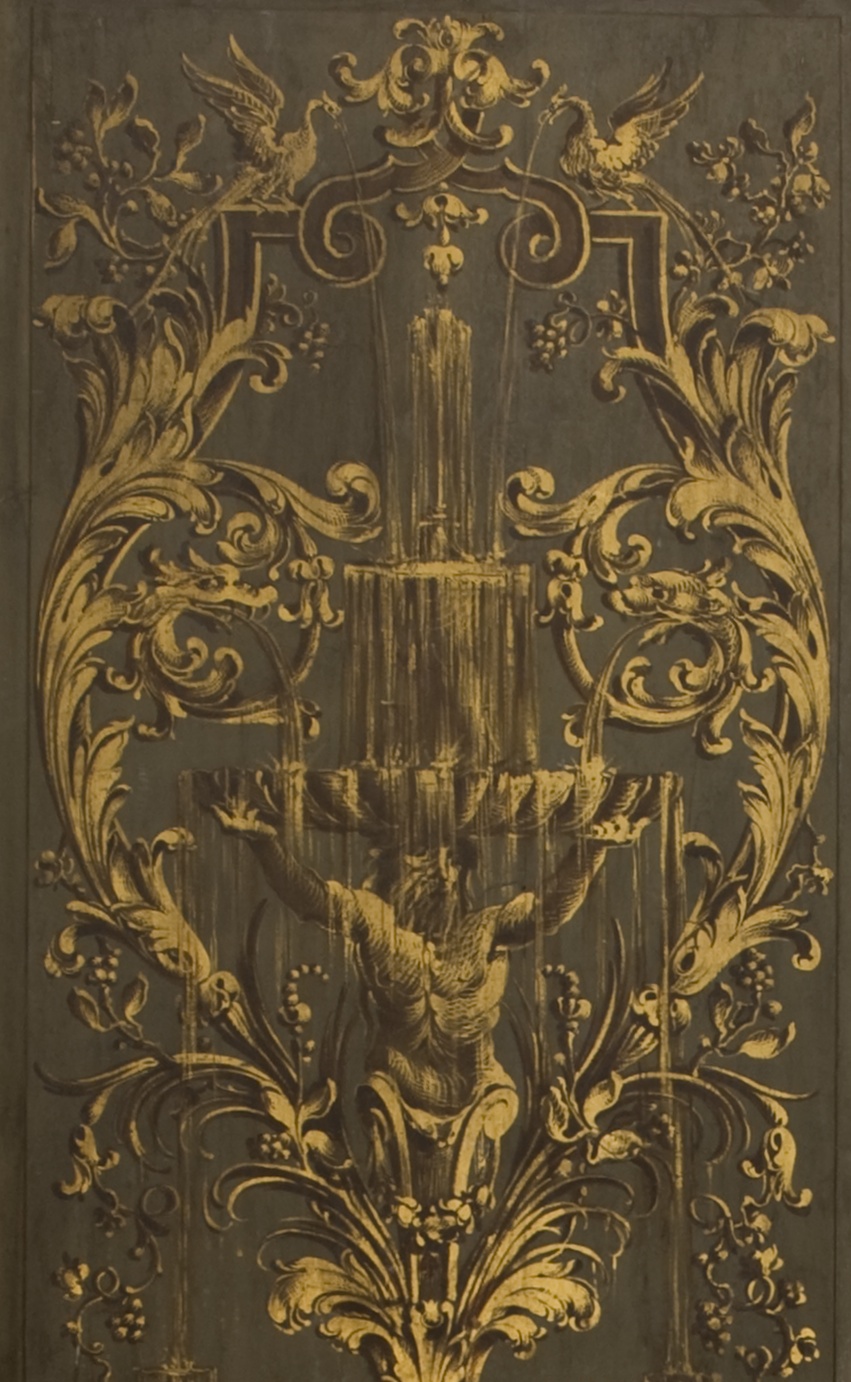
A detail of a screen by Mark Anthony Hauduroy after a design by Daniel Marot, 1720.
There are a couple of delicious ironies in that last paragraph.
Louis XIV, as one of our previous blogs recounted, was the monarch responsible for revoking the Edict of Nantes and for the subsequent departure of hundreds of thousands of French Protestants (the Huguenots) from France: a huge brain drain of which Britain was a principal beneficiary. And Ralph Montagu, while not a Huguenot, was a Protestant who had the ear of the (secretly) Catholic Charles II and his wife, Catherine.
But, whatever your religious persuasion, if you are looking for people to work on your big project, you want the best you can get, ideally without having to pay the world for it. Ralph Montagu inherited Boughton House in 1684 and threw himself with immense enthusiasm into the conversion of the property that his father had started. So how convenient that his inheritance of Boughton came the year before the revocation of the Edict of Nantes and the start of the arrival on our shores of so many skilled French craftsmen. Already immersed in French culture and style from his days as ambassador, Ralph set about commissioning, among others, Daniel Marot, the architect, furniture designer and engraver famous for his work at Hampton Court Palace; the artist Louis Chéron, who is responsible for the ceilings painted throughout the State Rooms; Peter Rieusset, the joiner who laid 271 yards of innovative parquet de Versailles at Boughton; the carver and gilder Jean Pelletier; the silversmiths Pierre Platel and Louis Mettayer; and Louis XIV’s favourite artist, Jacques Rousseau. Many of these people were employed to furnish the Duke’s house in Bloomsbury, London (Montagu House, the site of the now British Museum), but many of their works are on display this summer at Boughton, along with the first A–Z of London (by Huguenot Jean Rocque), miniature portraits by Isaac Oliver and some superb weaponry by Lewis Barbar.

The title page of John Rocque’s Plan of London and Westminster. Rocque was the most sophisticated cartographer of the century and made an enormous contribution to the re-mapping of England (see below for more on John Rocque).

Silver sugar caster, the work of Paul de Lamerie (London, 1736). Paul de Lamerie qualified as a silversmith after the death of Ralph Montagu but is acknowledged as one of the great Huguenot craftsmen.
Details of the Huguenot exhibition at Boughton, which the Institut Français is supporting, can be found on the Boughton House website, where there is also an instructive interview with the exhibition’s curator, Paul Boucher. The Migration Museum Project has supplied two of the ‘contextualising’ panels to the exhibition, in an attempt to put the arrival of the Huguenots in the framework of migration to this country across the ages. The Independent has run a feature on the exhibition, which gives a detailed account of what there is to see.1
Nowadays people tend to speak in glowing terms about the influence of the Huguenots on British life and the extent to which they expanded the nation’s skill-set, increased its competitiveness, prepared the ground for the Industrial Revolution and generally wove their way (pun intended) into the fabric of the country. But in the clamour to celebrate the contribution of the Huguenots and their lasting legacy, it is worth sparing a thought for the people plying their trade in the 17th century – the silversmiths, weavers, goldsmiths and cabinet makers – who suddenly found themselves less in demand with the arrival of such skilled labour from Catholic France. Relatively little is known about the reaction of the indigenous workforce to the arrival of this European talent, but there are accounts of attempts to restrict the trading of Huguenot craftsmen. In 1711, for example, a petition was made to the Goldsmiths’ Company by ‘severall working goldsmiths, freemen of this Company’ complaining:
THAT partly by the generall decay of trade, and other ways by the intrusion of foreigners, severall of the workmen of the said Company have for the supports of their familys been put under the force of underworking each other, to the perfect beggary of the trade, and at length under the necessity of loading their worke with unnecessary quantitys of sother, to the wrong and pre-judice of the buyer, and the great discredit of the English workmen.
That by the admittance of the necessitous strangers, whose desperate fortunes obliged them to worke at miserable rates, the representing members have been forced to bestow much more time and labour in working up their plate than hath been the practice of former times, when prices of workmanship were much greater.
One outcome of these attempts to restrict trade may well be that a lot of Huguenot work was hidden, because the craftsmen, having no official entitlement to trade, sold their work to those who did – and these third parties then went on to pass the Huguenot work off as their own.
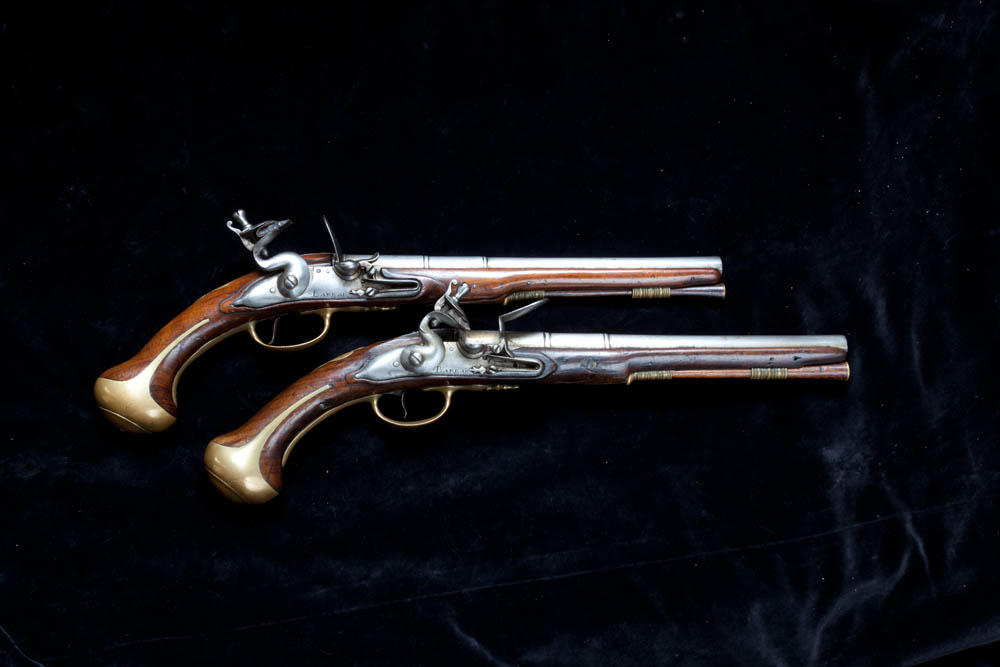
A pair of ‘over and under’ flintlock pistols by Lewis Barbar (active c1704–1741 – these are likely to be c1730), with turn-over barrels and safety catches. Each escutcheon is engraved with the Montagu crest (see below for more on Lewis Barbar).
It’s a shame that more isn’t known of the way in which Huguenot craftspeople in particular were received by the resident working population. In the absence of any clear information, the suggestion has to be that the two populations ended up accommodating themselves to each other in that ‘muddling along’ fashion that is often the British way. What seems to be clear is that, though there were riots against ‘the French’ in parts of England, there was generally less hostility shown to the Huguenot migrants than had (or has since) been shown to other groups. And the people who might understandably have been voicing complaints along the lines of ‘Those Huguenots … coming over here with their fancy ways and nicking our jobs’ would appear to have not been too damaged by their arrival in the longer term. It is abundantly clear that the country as a whole – on every conceivable level: economic, military, industrial, financial, cultural – benefitted dramatically from what has been dubbed ‘the quiet conquest’ of the Huguenots.
Further notes on Daniel Marot, John Rocque and Lewis Barbar
Daniel Marot had been working at the Gobelins tapestry workshops in Paris but fled France in 1684, arriving first in Holland, where he brought Louis XIVs’ court style to The Hague and Het Loo palaces. He arrived in England in 1694, a welcome addition to the network of Huguenot craftsmen. Highly influential in every area of design, he introduced to England the idea of the architect as interior designer, a notion followed later by William Kent and Robert Adam. Marot created significant designs for the royal palaces and gardens at Hampton Court and Kensington, and he created lavish interiors in the grand French manner for Montagu House. A significant amount of his Montagu panelling survives today at Boughton, where his influence can also be detected in the North façade. Marot’s designs heavily influenced furniture makers and were used by generations of the Pelletier family who worked extensively at Boughton and who played an important part in the development of rococo carving and frame making.
John Rocque: The Rocque family fled the Languedoc in Southern France and arrived in London in 1709 via Geneva, where John was born in 1705. John described himself as ‘dessinateur de jardins’, and his first publications in 1734 were meticulous plans of the royal gardens and parks at Richmond and Kew. He followed these with plans of Chiswick House, Hampton Court, Windsor Castle, Kensington Palace and Drumlanrig Castle, recording garden style before the advent of Capability Brown and the new natural landscape. Working in Huguenot Soho, he published his new map of London in 1746, attracting 246 subscribers, among them the Prince of Wales and the Duke of Montagu, to whom the overview page was dedicated. Its 24 sheets were extravagantly engraved in the latest French rococo style on large copper plates to the scale of 200 feet to the inch. The publication came with a separate A–Z street index (the first ever), which detailed 5,500 separate locations including squares, coal wharves, orchards, theatres, inns, distilleries, hospitals, prisons, asylums, schools and much more, including all 13 French churches. Rocque’s plans of English towns and their gardens remain some of the finest ever published and his pioneering UK road guides were used by many travellers. He died in London in 1762.
Lewis Barbar: Lewis (Louis) Barbar, a Huguenot from Poitou, came to London in 1688 and was naturalised in 1700. He became Gentleman Armourer to both George I and to George II. He died in 1741 and was succeeded by his son James. The best gunsmiths were Huguenots and they brought with them a hitherto unknown level of refinement, technical skill and workmanship, making London-French-made guns the best in the world. There was a huge market for pocket size pistols for personal protection and a large black market in French counterfeits grew up.
1 Boughton House is worth visiting in any case, of course. Much of the original structure and many of its 17th-century features have been preserved, largely as the result of the House ‘sleeping’ through two centuries, in the course of which there were no male heirs and it passed through the female line to families who had their main homes elsewhere (imagine having Boughton House as your second home!). An unintended benefit of this hereditary sexism is the unaltered state of many of the key features of the House.
Huge thanks to Paul Boucher, curator of the exhibition at Boughton House, for supplying images and captions for the photographs featured here, and also to Tessa Murdoch, deputy keeper at the Victoria & Albert Museum, for correcting errors in an earlier draft of this blog and for directing me to the petition about ‘necessitous strangers’.


